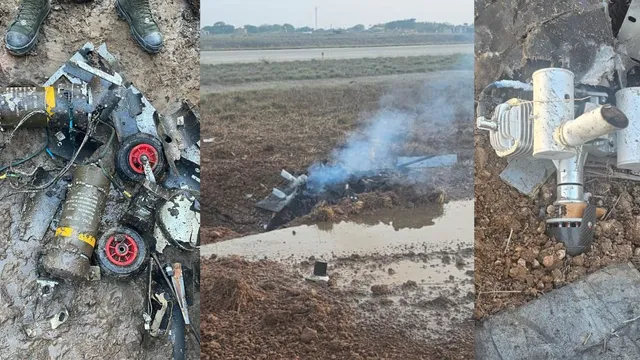- By Supratik Das
- Sat, 10 May 2025 10:09 AM (IST)
- Source:JND
Amid rising tension between the two nuclear-capable neighbours, Pakistan launched an all-out military campaign against India in the early hours of Saturday, calling it 'Operation Bunyan Ul Marsoos', a reference to the Quran that means 'a solid wall of lead' or 'a firm, united structure'. The Pakistan Army claimed responsibility for, asserting that the offensive was in response to India's previous Operation Sindoor, aimed at terrorist launchpads deep within Pakistan, including locations within its Punjab province and Pakistan-occupied Kashmir. Seven Indian strategic sites were attacked in Pakistan's retaliatory strike, such as the Pathankot and Udhampur air bases, BrahMos missile depots in Beas, and Gujarat and Rajasthan airfields. Multiple ballistic missiles like the Fattah-I and Fattah-II, and several armed drones were claimed to have been used by Pakistan's armed forces.
What Does 'Bunyan Ul Marsoos' Mean?
The word 'Bunyan Ul Marsoos' (also spelled Bunyan-un-Marsoos or Bunyanun Marsoos) is from Surah As-Saff of the Quran and implies believers standing as one “solidly constructed structure.” By drawing on this verse, Pakistan seems to be politicising its military campaign in terms of religion and ideology. This is an attempt to give the operation a symbolic and spiritual overtone amid intensifying hostilities. The naming of a military operation with a Quranic name is a new move from past naming conventions and has been controversial regarding Pakistan trying to assign a communal color to the conflict, particularly in the wake of recent attacks on civilians with religious undertones.Pakistan's decision to title its operation 'Bunyan Ul Marsoos' is no coincidence. By selecting a Quranic verse, Pakistan is probably trying to mobilize national support and portray the conflict as ideologically loaded.
India, on May 7, had conducted aerial strikes under Operation Sindoor, targeting nine terror camps in Pakistan and Pakistan-occupied Kashmir (PoK). Significantly, one of the targets was a terror launchpad 100 km deep within Pakistan's Punjab province, a strongly symbolic and strategic action. India has claimed these strikes were retaliation for the April 22 Pahalgam terror attack, in which Pakistani terrorists allegedly identified Hindu tourists and killed them at point-blank range. Saturday’s Pakistani retaliation marks the worst escalation in nearly three decades, with heightened drone activity, missile launches, and cross-border firing being reported on both the Line of Control (LoC) and the International Border.
India Strikes Back: High Alert Along Border States
The Indian Defence Forces also initiated counterattacks within hours, targeting terror-related infrastructure throughout PoK. The Defence Ministry confirmed that 26 targets along the LoC and border were struck using drones, and Indian air defence systems successfully intercepted several Pakistani UAVs, including around Amritsar, Ferozpur, and Srinagar.
"Pakistan is again trying desperately to impart a communal hue to the situation to create discord. We are not surprised," Misri added. "India's steadfast unity in itself is a challenge to Pakistan," said Foreign Secretary Vikram Misri on May 9. The government has assured that all three armed forces are still on high operational alert, and any additional provocation will be met with "firm and calibrated responses. Without indications of de-escalation and both sides exchanging high-intensity attacks, the area is still on tenterhooks, with international observers bracing for fear of the conflict spiraling out of control. The G7 nations on Friday urged both India and Pakistan to exercise maximum restraint and prevent further deterioration. The UK High Commissioner to Pakistan, Jane Marriott, stated that they were “closely monitoring the situation” and urged both sides to return to dialogue.

